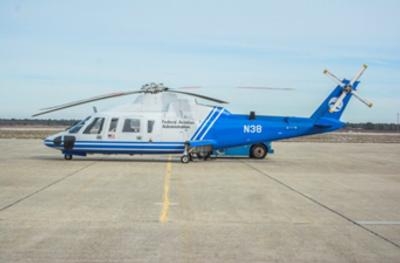Mon, Apr 10, 2017
The Research Is Being Conducted To Support Potential New Regulatory, Policy And Guidance Initiatives For Enhanced Flight Vision Systems For Helicopters
The FAA an Elbit Systems will work together to study operational concepts for the use of Enhanced Flight Vision Systems (EFVS) in helicopters. The study will help lay the foundation for the future implementation of EFVS in rotorcraft.

While EFVS rules currently exist for approaches to runways at airports, comparable regulations for EFVS do not exist for helicopters flying to onshore or offshore helipads at heliports. In addition, the unique aspects of helicopter flight and the visual cues generated require additional considerations beyond the typical Head-Up Displays (HUDs) used today.
As part of the study, Elbit Systems will install the Heli-ClearVision EFVS in the FAA’s Sikorsky S-76 helicopter to be used as the evaluation platform. The system will include several subsystems such as the revolutionary Skylens/SkyVis wearable Head Worn Display, the HeliEVS, Synthetic Vision System (SVS) and a Combined Vision System (CVS).
The study will consist of several flights to assess operational concepts and sensor characterization criteria for maintaining visual references/cues during the visual segments of instrument approach procedures and enhancing VFR (Visual Flight Rules) operations. Flights are planned to occur in different weather conditions (i.e. visibility), times of day (day, night, twilight), and via different approach types (i.e. LNAV, LPV). The results of the study will be used to evaluate the overall contribution of EFVS technology to flight safety and operational effectiveness for helicopters. Yoram Shmuely, General Manager of Elbit Systems’ Aerospace Division, said: “We are proud to cooperate with the FAA in regulating enhanced vision operation for rotorcraft. This technology will enable many lifesaving missions and will significantly increase the safety of the flying crew”.
(Source: Elbit Systems news release. FAA Image)
More News
From 2023 (YouTube Version): Legacy of a Titan Robert (Bob) Anderson Hoover was a fighter pilot, test pilot, flight instructor, and air show superstar. More so, Bob Hoover was an i>[...]
Get The Latest in Aviation News NOW on Instagram Are you on Instagram yet? It's been around for a few years, quietly picking up traction mostly thanks to everybody's new obsession >[...]
Aero Linx: B-52H Stratofortress The B-52H Stratofortress is a long-range, heavy bomber that can perform a variety of missions. The bomber is capable of flying at high subsonic spee>[...]
Altimeter Setting The barometric pressure reading used to adjust a pressure altimeter for variations in existing atmospheric pressure or to the standard altimeter setting (29.92).>[...]
"Knowing that we play an active part in bettering people's lives is extremely rewarding. My team and I are very thankful for the opportunity to be here and to help in any way we ca>[...]
 Classic Aero-TV: Remembering Bob Hoover
Classic Aero-TV: Remembering Bob Hoover ANN FAQ: Follow Us On Instagram!
ANN FAQ: Follow Us On Instagram! ANN's Daily Aero-Linx (05.15.24)
ANN's Daily Aero-Linx (05.15.24) ANN's Daily Aero-Term (05.15.24):Altimeter Setting
ANN's Daily Aero-Term (05.15.24):Altimeter Setting Aero-News: Quote of the Day (05.16.24)
Aero-News: Quote of the Day (05.16.24)



